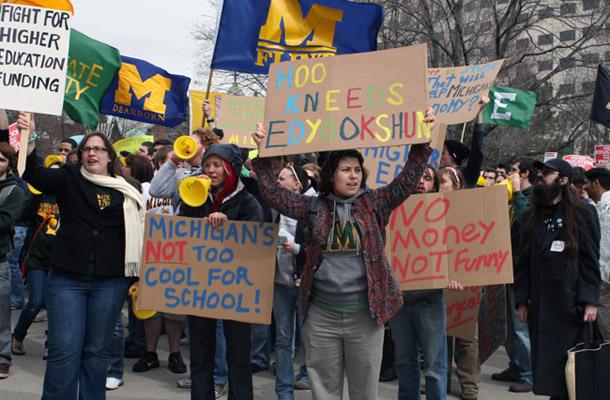Students representing public universities from across Michigan gathered to voice their frustration with the state of higher education funding Thursday at the Capitol building, 100 N. Capitol Ave., in Lansing.
The rally was hosted by the Student Association of Michigan, or SAM, a student coalition with representatives from 15 Michigan universities. SAM advocates for the promotion of higher education in state government.
The event featured student and professional speakers from across the state who voiced their opinions on proposed cuts to higher education funding. Gov. Rick Snyder has proposed to cut universities’ state funding by as much as $360 million collectively.
MSU’s share of that could be as much as $61 million, although $18 million of that could be recouped if the university keeps tuition increases at 7 percent or less.
Jay Gage, a representative of SAM and a Lake Superior State University student, said support for higher education funding is important because an investment in students is an investment in the future.
“The students are the future leaders and the future workers of the state,” Gage said. “I think it’s a shame that (the state government is) subsidizing different avenues of different things in the state without focusing on the future.”
Having MSU representation at the rally particularly was important, considering the proximity of the campus to the Capitol, said Michael Lipphardt, director of educational policy and university budgets at ASMSU.
ASMSU is MSU’s undergraduate student government.
“We really wanted to have a representative out today, particularly because MSU is so close to the Capitol,” Lipphardt said. “We believe that our collaboration with SAM and being down here is one of our top priorities.”
Penny Gardner, the president of the Union of Nontenure-Track Faculty at MSU and assistant professor of writing, rhetoric & culture and veterinary medicine spoke at the rally. As an educator, she said she has been able to see the potential of many students for higher education and wanted to make sure they were not hindered by lack of funding.
